The Sloth Lane: Interview with Director and Writer Tania Vincent
Long-time fans of Skwigly may be familiar with the name Tania Vincent, who was a contributor for the magazine back in 2012. After all these years, Tania didn’t just become a successful animator, but became a successful director and writer, having been a co-director on animated films such as Scary Girl and Combat Wombat: Back 2 Back.
Her latest project, The Sloth Lane, saw her become the first female director for an animated feature in the Australian film industry. After appearing at multiple international film festivals last year, it will finally be available to UK cinemagoers this year from 14th February. The film tells the story of the energetic and excitable sloth Laura and her slowpoke family who move into the busy and fast-paced Sanctuary City from their once quiet lives to open up a new restaurant, all while confronting personal obstacles as a family.
I had the privilege to speak with Tania and, not just learn about how her life has changed since writing for Skwigly, but also about what it’s been like to be a part of the Australian animation industry during its peak these past few years and writing a story that contains hard-hitting themes not usually explored in animated films aimed for families.
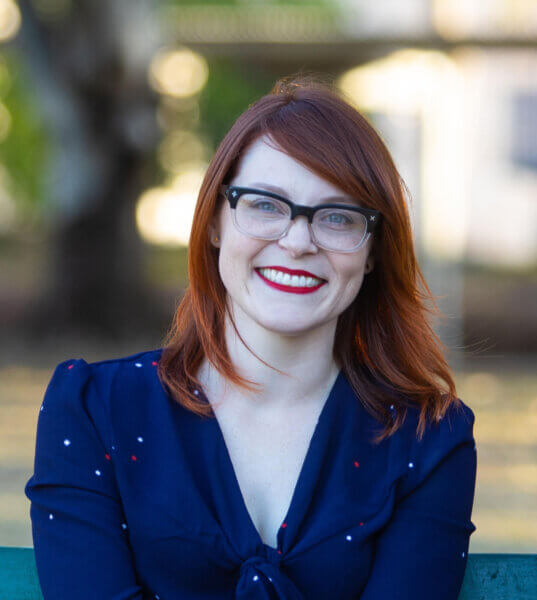
Tania Vincent
Seasoned Skwigly readers may be familiar with your contributions as a writer as far back as 2012. From those early days of your career to writing and directing your first feature, could you tell us about your journey?
It’s so surreal to talk to you because I was obsessed with Skwigly at university. We had the magazines on the table so when I started writing for them all those years ago it was so exciting because I was just obsessed with everything animation. I think the reason I loved working with you all at Skwigly is because you could just immerse yourself in animation and movies and meet all these incredible creators. One of the interviews I got to do was with Peter Ramsey, who had just directed Rise of the Guardians, and he was so kind to me and so lovely and it was just so inspiring.
I got very lucky. This might be the same for a lot of people, but I was obsessed with making videos for animation and all the directors back then were animators, so I was like “that’s how you do it. That’s how you get there.” I took the very long road of animating and getting into a lead position and I just got really lucky. I was working on a film and I was doing comics outside of work and the owners of the company saw those comics and asked me if I ever considered directing.
I got to co-direct a small movie called Scary Girl based on a graphic novel, which was in the UK cinemas last year. Outside of work, I was writing scripts with my writing partner Ryan Greaves and we got super lucky as Ron Howard picked one of our scripts in a contest and from that we sold our script to Netflix in the US and because of that, combined with my co-directing, I got asked to write and direct The Sloth Lane. All of these tiny pieces of work that I done throughout the years came together for this one film. It was incredible. It was crazy.
The Sloth Lane is the fifth entry in The Tales from Sanctuary City franchise from Like a Photon Creative. What makes this film stand out from the previous instalments?
They do them in sets of three so I think they wanted to make the next set, which The Sloth Lane was included in, to bring in some new creators and really give the reigns to me and my co-writer Ryan Greaves and, because I worked on so many films, the trust they put in me to make something that spoke to me and the crew, it was something really special. The other films we made had Australian animals in it but this one had some South American and Central American animals, too, so I think it had a much wider perspective that people could come in and we talked a lot more about some deeper issues.
I feel really happy that they supported me in this idea that animated films just don’t have to be aimed at kids and don’t have to dumb it down for kids at all. I think you can tell really big themes and stories and I think that’s all the films we grew up loving so they put a lot of trust in me to do that and I’m very appreciative for it. We touch on the themes of Alzheimers in the film and me and Ryan had been touched by that in our families. It was lovely to dive into that and try to find a hopeful story on such a sad and touching subject.
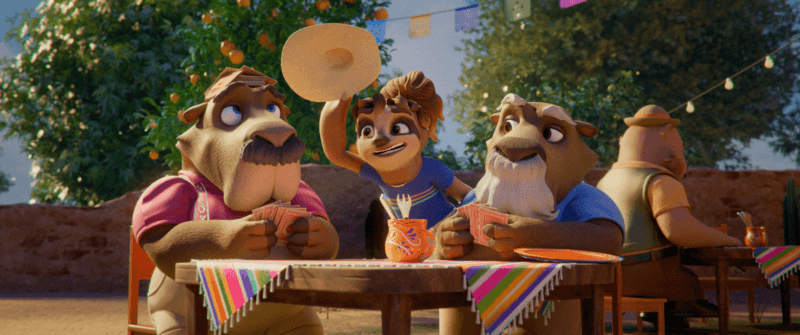
Copyright © 2024 Like A Photon Creative Pty Ltd
This film is notable for the fact that it made you the first woman in Australia to write and direct an animated feature film. What is the landscape like in Australia for women filmmakers; especially within animation?
It was so surreal when I found out. It’s exciting but terrifying all at the same time. I’m originally from Wales in the UK, I’ve been in Australia for about ten years now and my whole career began in the UK. When I started, I think I worked in a company with three hundred people and there was only like five woman and now I look around the studio and it’s fifty fifty; if not more sometimes. What I love about that is it just brings so many new voices and stories into the room and so many new perspectives.
In Australia right now I think they’re going through a bit of an animation golden age with things like Bluey, which is so beautifully written. The Lost Tiger is directed by Shantelle Murray and she’s the first indigenous woman to direct a movie and I think it’s an exciting time to see all these people get a chance to do what they love. I’m really excited to see what the future of animation is going to look like in Australia, but also everywhere. I think it’s starting to happen all over the world which is richly exciting.
What was it like to share the director’s chair with co-director Ricard Cussó, who has directed most of Like a Photon Creative’s other films?
I’ve known Ricard for many years; since I was an animator on his first film. It was really surreal to be his lead animator for a few years and then join him to be his co-director for Scary Girl and kind of flip it and he came on as my co-director for my movie. What I love about that was that we had such a rhythm and we knew each other so well by that point that it was such a great relationship. The director can’t be everywhere and having that partner in crime always with you from start to finish; seeing your vision for the film and helping you through, it is incredible.
The beauty of this film is that there’s a lot of Spanish speaking dialogue and Ricard has that Mexican heritage that we wanted to put on the screen. It was a kind of marriage of me being able to tell this beautiful mother and daughter story and him also making this film that he can take his little girl to when she’s older and see her Mexican and Australian heritage on the screen too. It was an absolute wonder. I’ve done lots of films with him and I absolutely love it.
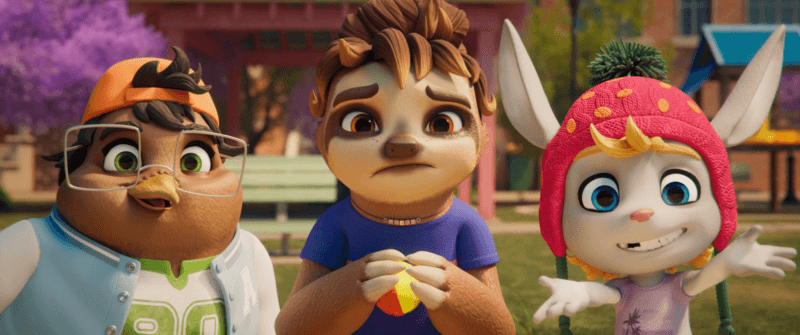
Copyright © 2024 Like A Photon Creative Pty Ltd
You touched on it briefly already, but this appears to be a more mature film at times compared to some other animated feature films in the past couple of years, especially with the mother figure and her struggles with memories and the family adapting to a new home. What were the biggest challenges to portraying those moments, not just as the film’s director, but its writer too?
It was really hard. It’s such a painful subject for so many people including myself and I think we wanted to tell this hopeful story. What is the hopeful side of Alzheimers or for anyone going through this, what can you possibly give? For us, the theme of the film is appreciating the moments you have – really seeing what’s right in front of you.
It was really important for us to put that message out in the world as things are awful, but if you can, take time to enjoy those special little moments you get with the people you love. It’s a message that’s very close to me and my writing partner and I think sloths were such a good animal to use for that message because we didn’t want to tell a story about a kid who wants to go fast while their family is going slow. We didn’t want that to be the theme of the film so delving deeper into that and what is slowness and really, it’s about time, it’s about getting somewhere. My mum would always say when I was a kid “you just don’t look into the future, you stare at it” and I was missing out on the now with her and all my family. It was nice to tell a story that was more centered in that slowing down, especially when everyone goes fast all the time.
Do you think there are more stories to tell with the sloth family for a potential sequel?
It’s hard because you leave them in such a hopeful place that I think if we went back, we would have to go back to the beginning. We have this tiny crew of forty people who threw absolutely everything into this film and I think everyone kind of fell in love with the sloth parents. I think if we were going to tell another story we would have to go back to the beginning and see how they met and how these two opposite people came together. I think that would probably be where you go, look backwards instead of forwards.
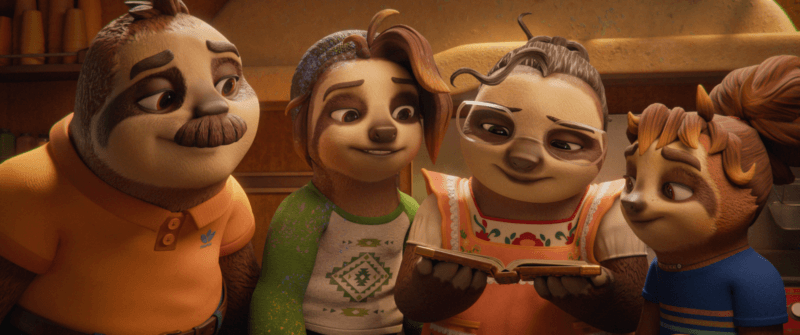
Copyright © 2024 Like A Photon Creative Pty Ltd
Like a Photon Creative, Flying Bark Productions, and Ludo Studios have become recognisable names with their films and television shows, especially with the latter with Bluey, internationally. How have they impacted the Australian animation industry domestically from your perspective?
Like a Photon is a production studio, so what they do is find all these creatives and find this funding, which is famously so hard, and find a studio to work with. The studio I work at is called Cosmic Dino Studio and they do all the animation for the movies and that studio was only created because Like a Photon had this story to tell and needed someone to animate it. The studio has been going now for about three years and it’s been so amazing to see it’s journey grow and keep growing and been working with people from Ludo as well.
They’ve started a small company and they’ve just grown and grown and grown because I think what they care about in Australia, and it’s so similar in the UK, is creator’s work. It’s not just creating something on an assembly line. It’s kind of creating something that the whole team is invested in. It’s been nice to see how much talent there is in so many countries and all these small companies are growing so big because they’re putting all that creativity on the screen. The UK and Australia have a lot to offer to the animation world.
The past few years appear to have been very busy for you – are you taking a break anytime soon, or do you have any other projects lined up that you can talk to us about?
Now that I’ve talked to you about it I kind of want to make the prequel (laughs.) I’m taking a little break as I’m doing the scariest thing ever which is becoming a Mum, but writing and directing is just so much of who I am and I’m excited to get back into it. I currently have two animated films that I’m writing with some partners. I can’t talk too much about them right now, but I’m really, really excited to be working with them. My dream is to make an animated sci-fi and an animated fantasy film so they’re kind of the two routes I’m going down at the moment.
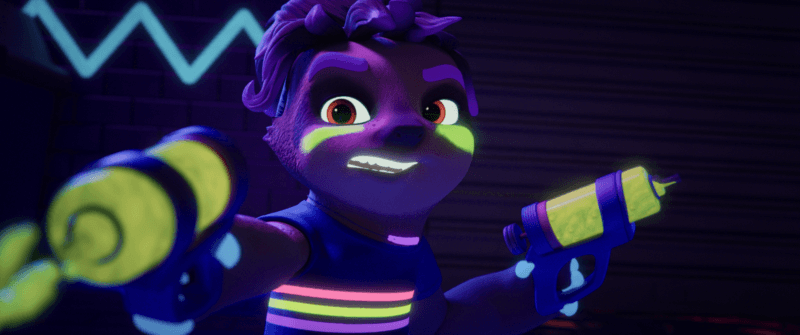
Copyright © 2024 Like A Photon Creative Pty Ltd
The Sloth Lane will be released in UK cinemas on 14th February 2025.


